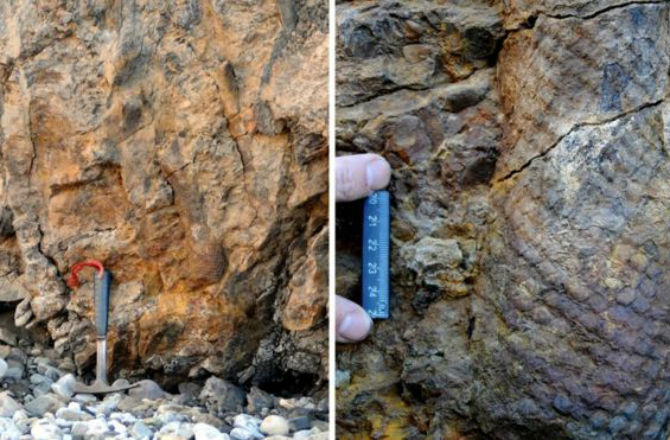What did some of the first trees on Earth look like? Earth scientists from Cardiff University digging around in Arctic Norway are closing in on an answer. And that answer is: weirdly familiar.
Fossilized stumps from a forest dating back 380 million years indicate that these trees must have resembled palm trees covered in fern-like leaves. They grew close together and reached about 13 feet in height.
Cardiff University paleobotonist Chris Berry and his colleagues found the fossils in Svalbard, an archipelago that would have been located close to the equator hundreds of millions of years ago. They identified the trees as a now-extinct lycopod with the zippy name Protolepidodendropsis pulchra.
Top 20 Reasons We’re Not as Powerful as We Think
The discovery of these strange forests could finally help explain a drastic drop in atmospheric carbon dioxide during the late Devonian time period. Just how drastic? It was a 15-fold reduction, a university press release said.
“It is rare fossil forests such as this that inform our understanding of the ecology and global distribution of large land plants during the transition to a forested planet,” the team wrote in the journal Geology.
This isn’t the first time Berry and his colleagues have pieced together an ancient forest. Back in 2012, he and his colleagues mapped out another Devonian forest that once grew in what is now Gilboa, N.Y., on the eastern side of the state.
Ancient Giant Trees Found Petrified in Thailand
“The fossil forest came to life in front of my eyes in a way that has never happened before,” he told Discovery News at the time.
These densely-packed ancient forests got me thinking. What if we could engineer a new tree with the powerful CO2-absorbing abilities of these early lycopods? They sound perfect for cities where space is at a premium. And with temperatures rising, I bet they’d thrive.
Ref: C. M. Berry, J. E. A. Marshall. Lycopsid forests in the early Late Devonian paleoequatorial zone of Svalbard. Geology, 2015; 43 (12): 1043 DOI: 10.1130/G37000.1
Key: WFS,Riffin T Sajeev,Russel T Sajeev,World Fossil Society



 November 20th, 2015
November 20th, 2015  Riffin
Riffin 

 Posted in
Posted in  Tags:
Tags: 